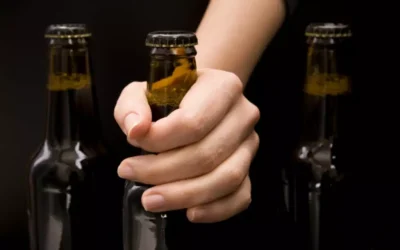Treatment options for opioid dependence include full opioid agonists (methadone), partial agonists (buprenorphine) and antagonists (naltrexone). For cannabis and stimulant use disorders, there are no FDA-approved treatments (8). With limited treatment options, a myriad of non-FDA approved medications (e.g., gabapentin, clonidine, bupropion) are tried as standalone pharmacotherapies and in conjunction with behavioral interventions. The best clinical evidence shows that patients should start treatment twice per week for 4 weeks. If a patient experiences substantial improvement (generally around 50% improvement in symptoms), the treatment pattern would shift to once per week for another four weeks.
Barriers to Esketamine Nasal Spray Treatment Among Adults With Treatment-Resistant Depression
Elon Musk reveals why he takes ketamine, denies abusing the drug: ‘I should keep taking it’ – Fox News
Elon Musk reveals why he takes ketamine, denies abusing the drug: ‘I should keep taking it’.
Posted: Mon, 18 Mar 2024 07:00:00 GMT [source]
It is important to note that ketamine is no longer safe when individuals take it inappropriately. The danger increases with regular use since it can harm health and other aspects of life. However, further research is necessary to verify the study findings and prove the safety of using ketamine to treat this condition. Ketamin can sedate, incapacitate, and cause short-term memory loss, and because of this, some people use it as a date-rape drug. Gail Serruya, M.D., is a psychiatrist with years of training in psychotherapy, who recently founded Voyage Healing PC, a ketamine-assisted psychotherapy clinic in Philadelphia.
Ketamine Addiction Treatment
Food & Drug Administration (FDA) decades ago for use in medical and surgical procedures. Four independent reviewers screened the titles and abstracts against the inclusion and exclusion criteria. Before independent screening, the reviewers screened titles and abstracts of 100 papers each to calculate the interrater reliability. During the full-text screening stage, reviewers were trained in using study eligibility forms to ensure consistency.
Ketamine Slang Terms

Research institutions and governing bodies like the Drug Enforcement Administration must administer the necessary trials before standardizing and legitimizing ketamine therapy. That said, research into using ketamine for SUD treatment is still in its early phase, and more work needs to be done before it can be recommended for widespread use. Evidence-based approaches for SUD treatment should be tried https://ecosoberhouse.com/ first, including medications to reduce craving (especially for alcohol and opioid use disorder) and numerous well-studied group, individual, and family-based behavioral interventions. It is particularly challenging to blind participants to treatment group assignment in a study of a mind-altering substance, like ketamine, because people know they are getting a placebo if they don’t feel a change.
Despite these positive results, the authors warn that data on the use of ketamine for this condition are limited, so practitioners should consider the risks of the drug before prescribing it. Outpatient treatment programs allow you to go home each day after treatment, although they do expose you to the temptations and triggers of your everyday environment. Inpatient rehabs are centers where you live at the clinic for a set period of time—typically between 30 days and 90 days. Ketamine was originally developed as an alternative to PCP, but it had more powerful side effects, so its use was relegated to animal medicine. Dosing can be challenging to gauge, and a person could be using the wrong drug altogether, leading to a dangerous overdose. Ketamine also causes long-term damage to the bladder and urinary tract that can result in a condition known as ketamine bladder syndrome.
Risks and Benefits of Using Ketamine in Addiction Treatment
This method of abuse is less common among people who use ketamine recreationally. Injecting ketamine involves using a liquid form of ketamine and injecting the drug into a vein or muscle (intramuscular) using a syringe and needle. Plugging ketamine is accomplished by inserting the drug into the anus using a syringe or other object.
- D.J.N. received consulting fees from Awakn Life Sciences, H. Lundbeck and Psyched Wellness; advisory board fees from COMPASS Pathways; and lecture fees from Takeda Medical Research Foundation.
- Rehabilitation centers can help with different treatment options, detox programs, and other necessary assistance for overcoming dependency.
- It also lasts a short duration of approximately 30 to 60 minutes and so it doesn’t take hours to wear off like some other sedatives.
- It works as a fast-acting anesthetic which is useful for doctors and veterinarians when conducting minor surgeries.
- If there is a relapse back to ketamine use, this does not mean that treatment is a failure, but rather that you may need more intensive treatment, a change in medication, or changes in your personal and social life.
- Interventions may include medication for depression or other mood disorders resulting from, or exacerbated by ketamine addiction.
- In addition to the effects listed above, medical complications of ketamine abuse have been reported.
His clinical and research focuses are on the treatment of alcohol, drug and substance use problems, with anti-addiction medications. As director of the Treatment & Research In Psychedelics (TRIP) program, he is involved in the development of psychedelic-assisted therapies for those suffering with addiction, depression, anxiety, and PTSD. Dr. Heinzerling is a trained psychedelic guide and holds a Certificate in Psychedelic-Assisted Therapies and Research (CPTR) from the California Institute of Integral Studies (CIIS). Ketamine works by blocking the activity of the N-methyl-D-aspartate (NMDA) receptor, a receptor in the brain that is involved in the regulation of mood, cognition, and pain perception. Ketamine therapy is thought to have rapid-acting antidepressant effects, with many patients reporting improvements in their symptoms within hours to days after treatment.
By regularly attending support group meetings and seeing a counselor, the newly sober person can utilize the tools and techniques they were introduced to in rehab. Being accountable to a counselor or a support group on a regular basis can help prevent relapse. Inpatient treatment programs monitor the often dangerous ketamine detox process as well as help treat the longer term psychological issues from chronic ketamine use. If these issues are not addressed, the user often relapses back to ketamine use. The more well-rounded the treatment program, the better the chances the user has for sustained sobriety. In a standard therapy session with your doctor, they will first discuss what will occur during the process.
Efficacy of Ketamine in the Treatment of Substance Use Disorders: A Systematic Review

Further details of Matthew Perry’s death illustrate why this is so important. But the FDA has not approved ketamine for mental health treatment, ketamine addiction which means treatment protocols vary. Ketamine is not yet FDA-approved for the treatment of any psychiatric disorder, including anxiety.
